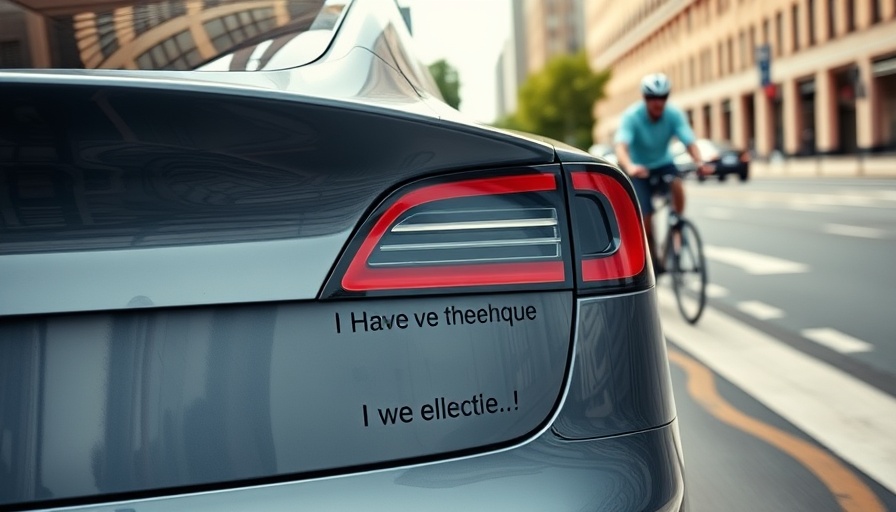
Unpacking Tesla’s Current Challenges: Innovation Meets Reality
Tesla, the once untouchable leader in Electric Vehicles (EVs), is currently facing a demanding landscape. With a reported drop in Q1 sales, the company is encountering mounting pressures from both competitors and government regulations. CEO Elon Musk, who has navigated Tesla through turbulent waters in the past, now finds his brand embroiled in global protests and a troubling stock price decline. Compounding the issue, new tariffs imposed by the Trump administration may protect Tesla's U.S.-manufactured vehicles, but these measures could also hinder the growth of its energy-storage segment.
The Competitive Landscape: EV Startups Seizing Opportunities
In this tumultuous environment, established automakers and emerging EV startups are capitalizing on Tesla's vulnerabilities. Companies like Ford are introducing enticing trade-in offers to attract Tesla customers, while newer players are pushing the envelope with innovative financing and technology options. A Massachusetts-based startup, EVident Battery, has recently raised $3.2 million to enhance battery inspection technologies, aiming to fill gaps in the growing EV market. Companies like these could potentially redefine consumer expectations and push Tesla to evolve or lose ground.
The Tariff Tango: Will It Benefit or Burden Tesla?
The recently announced tariffs present a complex dilemma for Tesla. On one hand, vehicles and components made in the U.S. might benefit from decreased import competition; on the other, high tariffs on foreign parts could inflate production costs. Moreover, as Ford and Volkswagen raise prices to combat import fees, the question remains: will Tesla’s perceived brand of innovation prevail, or will the rising costs affect its market profitability?
Future Outlook: Can Tesla Innovate Its Way Back?
As the company eyes the launch of its robotaxi service, the stakes are higher than ever. Competitors like Waymo are establishing robust partnerships with city stakeholders, while Tesla’s outreach appears lackluster. Furthermore, safety concerns over the automation technology, which currently relies solely on camera inputs, warrant attention from regulators and consumers alike. As Tesla strives to reclaim its market dominance, proactive measures addressing public perceptions and technological shortcomings will be critical.
In a world where the electric vehicle landscape is rapidly evolving, staying informed about Tesla’s journey and the industries surrounding it will equip consumers with the insights they need to navigate this dynamic market.
 Add Row
Add Row  Add
Add 




Write A Comment